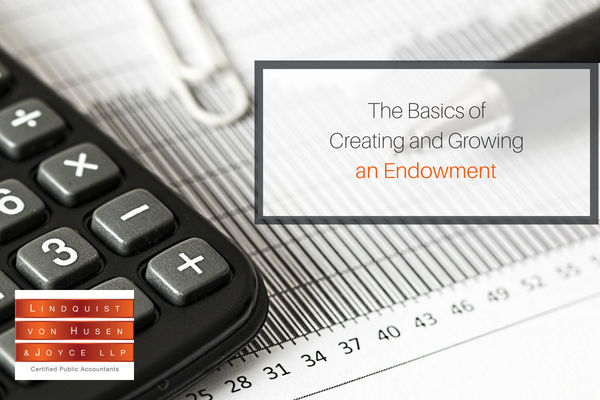
All nonprofits should think about setting aside money for a rainy day, but it’s a bigger consideration when you do it through an endowment.
Endowments, by their nature, are not usually collected for the purpose of spending the money. The definition of an endowment, is the portion of funds set aside that are “permanently restricted” unless a donor or the court says the organization can spend it. The interest and dividends from the endowment, however, can be used for a variety of unrestricted or partially restricted uses, depending on the purpose of the endowment.
If a nonprofit organization sets up an operational endowment, usually the interest and dividends are used to supplement donations for operations. The endowment provides a long-term foundation for the future of the organization’s health. A rule of thumb is that this endowment amount is roughly twice the amount of the organization’s annual operating expenses.
There are also cons to setting up endowments because the initial dollar value can erode over time and the nature of having a large endowment may make donors shy away from giving to immediate needs; they may assume that the organization is “well-funded” already.
One of the major arguments against endowments is about supporting current need. An organization’s leaders, its board of directors and donors will have to agree that developing a fund that supports the nonprofit’s mission long after they are gone is a valuable pursuit in the midst of continuing to fundraise for mission needs today. It may be a difficult hurdle to jump. It seems that fewer donors are as future focused or as loyal to a single cause as they once were.
If, however, your organization has an interest in building some type of endowment for either general operating or mission-specific uses, plan on having some staff or advisors to oversee and manage its investment and future fundraising efforts. It may take time for an organization to build a large enough endowment for the interest and dividends to actually benefit the organization’s needs (although a small donor-contributed amount of restricted or partially restricted cash donation could be considered an endowment according to FASB). In addition, those funds will need to be reviewed and audited to ensure proper controls and financial oversight.
To emphasize, an endowment does not replace a cash reserve fund. Having adequate liquid cash reserves is always the first step to nonprofit financial health along with a realistic budget. If you have any questions about the fiduciary responsibility of managing an endowment or whether it’s a good move for your organization, you can speak to a registered investment advisor. But you can also talk to the audit professionals at LvHJ.
Learn more about our services for not-for-profits.
Sources:
State of California Department of Finance
Guidestar
Nonprofit Quarterly








